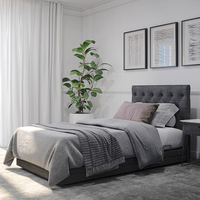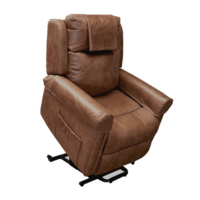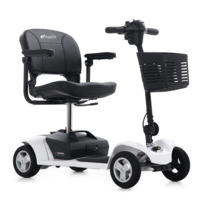Manual Handling Tips for Carers
As a carer, your role often involves many tasks – from general housekeeping to helping with medical care and providing hands on assistance to help with daily activities.
Many of these tasks can be physically demanding, so it’s important to look after your own health to ensure that you can continue to provide care and support to your loved one.
Transfers and handling tasks can be particularly difficult for both the carer and the person they care for – be they adults or children. Types of manual handling tasks might include:
-
Helping someone get into or out of a chair or bed
-
Assisting with toileting and getting dressed
-
Wheelchair transfers
-
Getting into or out of the car
These types of movements can put carers at risk of a back or other injury if not done correctly. And it might not be a one-off strain. The effects of overexertion can build up over time, so that one awkward move may be the “straw that breaks the camel’s back and result in an injury. Also, as we age, our joints and muscles change so that tasks we once could do comfortably may now be more difficult and require us to consider additional support or equipment to enable us to continue caring safely.
Because you want to continue to care for your loved one, it’s important to review and assess the types of physical tasks you carry out and adjust the way you do things if needed.
Here are some general safe manual handling tips for carers.
1. Learn about safe manual handling
Information about safe manual handling is continually being updated. If it’s been a while since you last reviewed this, make time for a quick refresher. You can view our Manual Handling Education videos here (please note our videos are intended as an adjunct to training) or enrol in a manual handling course.
Your loved one’s therapy team can also provide some specific advice or you may be able to find a specialist to visit your home and show you how to carry out certain tasks in a safe way.
2. Plan and Prepare
Before you attempt to move the person, prepare the environment and plan the move and activity.
Set up for the activity that is planned (e.g. if you plan to help your loved one shower, prepare the bathroom before the transfer to make sure you have what you need on hand e.g. towels, soap, clothing). This will save you having to leave your loved one unattended to find something you may have forgotten)
3. Create plenty of room to move
Manual handling can be particularly difficult when done in a tight space, so it’s important to give yourself as much room as possible for every task. Ensure there is plenty of space for the person, carer or carers, equipment to assist the transfer and equipment that the person is being transferred from (e.g. bed) and transferred to (e.g. mobile shower commode). This might mean adjusting the layout of the room, making better use of storage space and removing potential hazards such as rugs and low furniture, ensuring that there are no trip hazards (e.g. mats, toys, clutter, pets or toddlers).
4. Foster a calm, relaxed mindset
When you’re busy, it’s common to want to hurry through tasks to get
things off your list. But feeling rushed or frustrated can lead to incorrect manual handling techniques and potentially cause anxiety in the person being transferred.
Try to approach every transfer or manual task with a calm, relaxed attitude. Allow plenty of time for these types of tasks – which may be easier said than done on those really busy days. But even taking a moment to breathe deeply 5 times can help bring your focus to the task at hand and reduce the risk of injury.
5. Talk through what you’re doing
Transfers, lifting and repositioning involve at least two people – you and the person you’re caring for. Depending on their physical capabilities, they may be able to assist with some of the movement.
Whether it’s the 10th or 1000th time making a transfer, communication makes sure you both know what’s happening and can react if needed. So make it a habit to talk through each step as you go.
6. Use transfer aids and mobility equipment to assist
Transfer aids and mobility equipment can help make manual handling safer and easier for you and the person you’re caring for. There are a lot of options to choose from and it’s beneficial to consider what may work for you.
Transfer aids and mobility equipment can include:
-
Hoists and lifters for transfers to a bed, wheelchair and/or bath
-
Adjustable home care beds to assist sitting up and getting in and out bed
-
Slide sheets and boards to aid positioning on a chair or bed
-
Swivel cushion for getting in and out of a car
-
Walk belts to aid movement
-
Shower wheelchairs for bathing and mobile shower commodes for showering and toileting
6. Continue to assess mobility needs
The physical demands of a carer can change over time, as well as the amount of help a patient may need. This might change suddenly, such as after having surgery or following a fall. But often, these changes can happen slowly as the patient gets older or their carer’s physical capability reduces.
It’s important that you continue to assess the mobility needs of your loved one and the manual handling tasks you carry out. Don’t assume that because certain tasks have become more difficult, there’s nothing you can do.
7. Look after yourself - mentally and physically
As a carer, your primary focus is likely to be caring for your loved one. But it’s essential that you take care of yourself as well – not just your physical health, but also your mental health.
A healthy diet, regular exercise, rest and time out will allow you to return to your role with renewed energy and strength. A daily walk, frequent massages and short breaks will give you much-deserved downtime. If you notice persistent pain, seek treatment and advice as soon as you can.
For more information on manual handling and caring for someone at home, contact the team at Mobility HQ. We can help with advice and assessment to choose the right equipment for your needs.




































